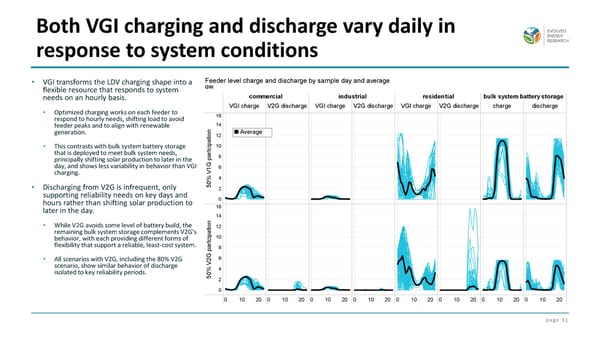page 31 • VGI transforms the LDV charging shape into a flexible resource that responds to system needs on an hourly basis. • Optimized charging works on each feeder to respond to hourly needs, shifting load to avoid feeder peaks and to align with renewable generation. • This contrasts with bulk system battery storage that is deployed to meet bulk system needs, principally shifting solar production to later in the day, and shows less variability in behavior than VGI charging. • Discharging from V2G is infrequent, only supporting reliability needs on key days and hours rather than shifting solar production to later in the day. • While V2G avoids some level of battery build, the remaining bulk system storage complements V2G’s behavior, with each providing different forms of flexibility that support a reliable, least-cost system. • All scenarios with V2G, including the 80% V2G scenario, show similar behavior of discharge isolated to key reliability periods. Both VGI charging and discharge vary daily in response to system conditions
 Exploring the Value of Vehicle to Grid (V2G) for California Page 30 Page 32
Exploring the Value of Vehicle to Grid (V2G) for California Page 30 Page 32